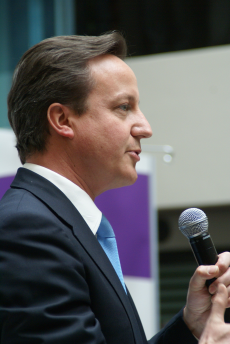
Conservatism has long been an important presence in British politics and has shaped the outlook of our country at least as much as liberalism has done so in its time. The Conservative party itself was founded in 1834. However, conservatism’s presence predates the founding of the Conservative party, finding a voice in the old two–party system of the Whig and Tory parties. Its founder is often considered to be Edmund Burke, a Member of Parliament who famously stood against the French Revolution at the end of the eighteenth century, defending the French monarchy which had been deposed.
By the end of the twentieth century, however, people who had long been supporters of the Conservative party and conservatism could have been forgiven for thinking their party was slowing heading towards its end. In the 1997 elections, Tony Blair won a landslide election as leader of the Labour party. And as if that weren’t bad enough for Conservative supporters, it lost in every parliamentary constituency in which it didn’t already have an MP. It made no gains and made many, many losses.
But after a few leadership changes over the early noughties, the Conservatives finally found the person who would be able to convince voters that the Conservative party still has some life to it (as well as its founding ideology). That person is our current Prime Minister (now in his second term), David Cameron.
David Cameron won on the basis that he could modernise the Conservatives into a party fit for the twenty-first century. He was a Conservative who expressed that he believed in climate change and said that the government should commit to reducing annual UK carbon emissions. This was in spite of the fact that many conservatives were and still are climate change sceptics and think that green policies are a waste of time.
He also tried to change the public image of the Conservative Party as a party which is old-fashioned by giving the famous hug-a-hoodie speech, in which he criticised (in the Guardian’s words), “short-term solutions to curb youth crime such as anti-social behaviour orders and curfews.”
Added to this, he was also seen as the man to win the gay vote for the Conservative party. This was important because for a long time the Conservatives had been seen as a party which was anti-gay, with the gay movements often associating themselves with the cultural and political left. His socially liberal views on LGB (Lesbian, Gay and Bisexual) matters then came to fruition when, under his leadership, the UK Parliament passed the Marriage (Same Sex Couples) Act 2013, which legalised marriage between gay and lesbian couples.
However, during his time as Conservative Prime Minister he has also shaped the modern understanding of Conservatism in other ways. Over the last eight years he has turned the Conservatives into the party of frugality – making sizable cuts to state spending so as to reduce our country’s deficit – arguing that by doing so he is conserving the country’s finances so as to hand on a more stable economy for the next generation.
So, what do you think of the way David Cameron has shaped the Conservative party and conservatism?
Image: By United Kingdom Home Office [CC BY 2.0 (http://creativecommons.org/licenses/by/2.0)], via Wikimedia Commons

0 Comment:
Be the first one to comment on this article.